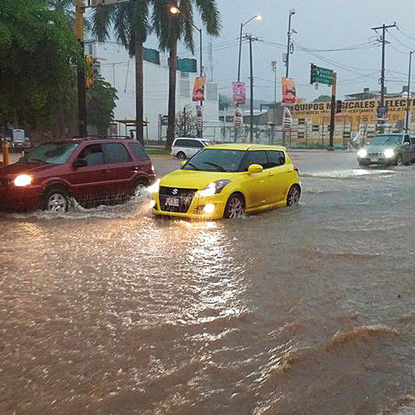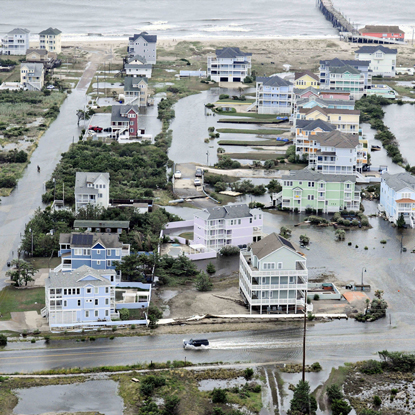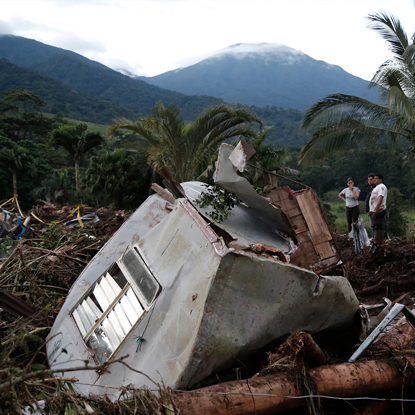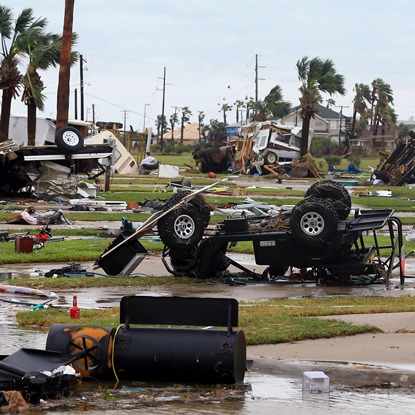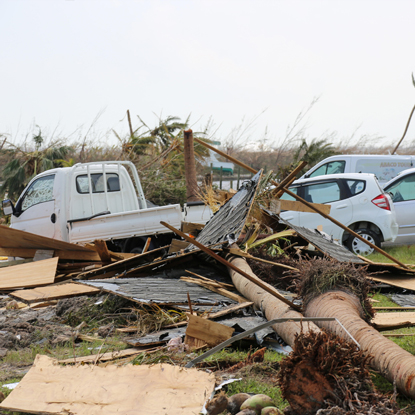


What are hurricanes?
A hurricane is a rotating tropical storm with winds of at least 119 kilometers (74 miles) an hour.
Video courtesy of James Reynolds / Getty ImagesThey are called:
- hurricanes when they develop over the Atlantic or eastern Pacific Oceans.
- cyclones when they form over the Bay of Bengal and the North Indian Ocean.
- typhoons when they develop in the Western Pacific.
The scientific name for all three is tropical cyclone.
Whatever their names, they are all formed in the same way and are capable of destroying areas and causing massive death tolls.
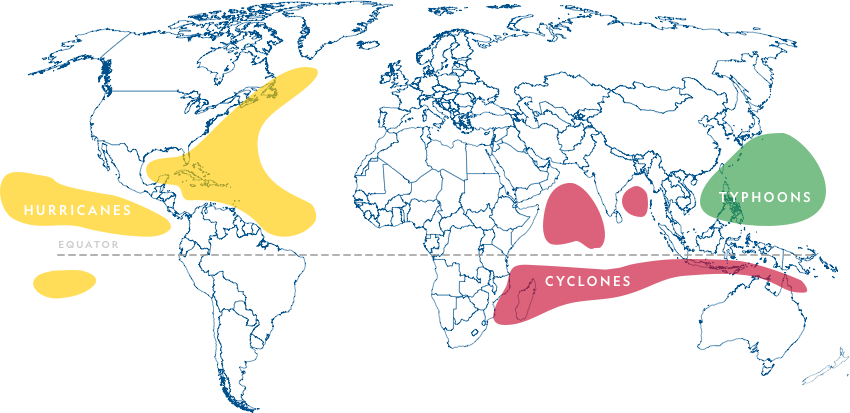
Did you know?
Hurricanes spin with a counterclockwise spin in the Northern Hemisphere and a clockwise spin in the Southern Hemisphere.
How hurricanes form
Did you know?
The word ‘hurricane’ comes from huracan, the Carib Indian name for the storm god.
Anatomy of a Hurricane
Once a hurricane forms, it has three main parts.
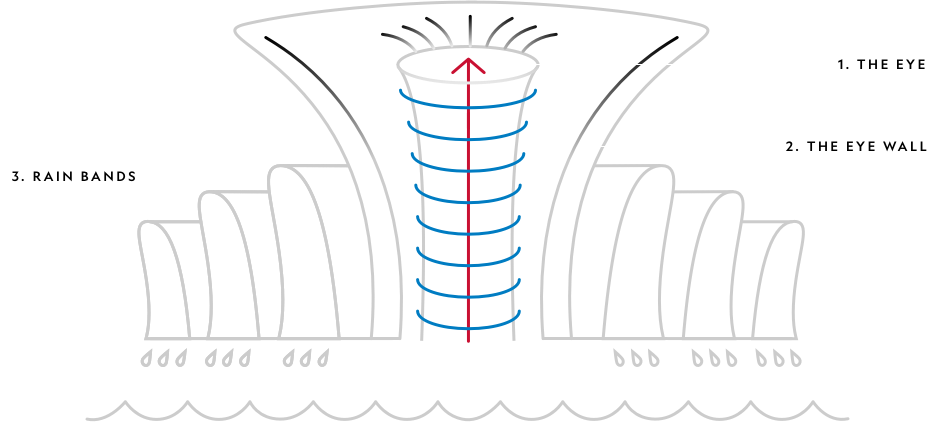
1. THE EYE — usually between 32 to 48 kilometers (20 to 30 miles) wide.
Air sinks inside the eye, clearing the skies and making it relatively calm. This calm often fools people into believing the storm has passed when in fact they are in the middle of it.
2. THE EYE WALL — surrounds the eye.
The hurricane's fastest, most violent winds and most intense rains are here. Air is rising fastest here and condensation rates are maximized in the towering cumulonimbus clouds.
3. RAIN BANDS — the outermost layer of the hurricane.
Rain bands are the first signs of the coming storm.
Where and when hurricanes form
Tropical cyclones are fueled by warm, moist air, which is why they only form over warm oceans that are near the equator. The map below shows you where hurricanes, cyclones, and typhoons form.
Select the to see which direction hurricanes, typhoons, and cyclones travel in and when their seasons are.
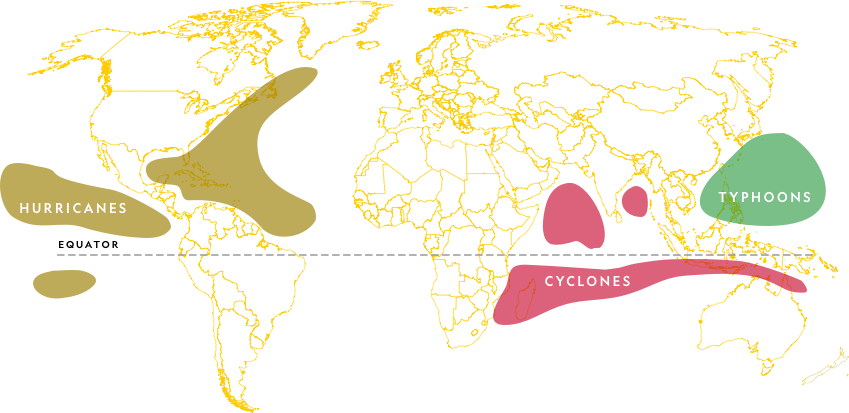
Type: Hurricane
Season: runs from June 1st through November 30th

Type: Hurricane
Season: runs from May 15th through November 30th

Type: Typhoon
Season: runs from June 1st through November 30th

Type: Cyclone
Season: runs between April and December

Type: Typhoon
Season: runs between April and January

Did you know?
The Western Pacific sees more tropical storms and typhoons each year than any other ocean basin.
Are hurricanes, cyclones and typhoons getting more intense?
Rises in sea level will most likely cause higher coastal inundation levels for tropical cyclones that occur.
Tropical cyclone rainfall rates are likely to increase.
The global proportion of Category 4 and 5 tropical cyclones is likely to increase, resulting in storms of unprecedented strength.
Did you know?
Hurricanes do have an important job. Tropical cyclones bring nutrient-rich colder water from depth up to the surface – resulting in algal blooms in their wake.
Damage hurricanes do
Meteorologists use the Saffir-Simpson hurricane wind scale to rank a hurricane's intensity. Wind speeds determine which category a hurricane falls into.
Saffir-Simpson hurricane Wind Scale
Select a category to find out about the level of damage done.
Over open waters, hurricanes can decrease sea surface temperature and create dangerous conditions for boats.
Once a hurricane rages onto land, however, it can bring with it:
- extremely high winds that can extend inland for hundreds of miles;
- torrential rains causing floods and landslides that affect a much larger area than that touched by the hurricane itself.
An average hurricane can drop more than 9 trillion liters (2.4 trillion gallons) of rain per day.
9 trillion liters (2.4 trillion gallons)
is equivalent to the water you would use by having
a shower that lasts for 2.2 million years
Did you know?
Hurricanes that have made landfall can spawn tornadoes hundreds of kilometers away from the center in the outer rain bands. This is where the wind is similar to thunderstorms that produce tornadoes.
Deadly storm surges
Deadly storm surges are the most dangerous aspect of hurricanes.
- A storm surge is a rise in sea level itself. It has two main causes: the barometric effect and wind setup.
- The barometric effect:
- In response to low pressure in the tropical cyclone, the ocean literally bulges.
- Pressure is the ‘weight’ of the atmosphere (per unit of area) – low pressure means low weight on the ocean surface (compared to outside the storm) – so the water bulges up in response to that weight being lifted off.
- Wind setup:
- Out at sea, the spiraling winds of a hurricane drive water in toward the hurricane's eye.
- When the hurricane approaches shore, the storm surge is amplified.
- As the storm goes ashore, so does the surge, causing severe flooding and devastating coastal communities.
- Storm surges can reach six meters (20 feet) tall and extend for nearly 161 kilometers (100 miles).
cause flooding – a major killer
cause beach erosion
wash out roads
sweep away railroads
decimate homes, businesses, marinas, and piers
Did you know?
More than 6,000 people drowned in 1900 when a six-meter (20-foot) surge flooded Galveston, Texas.
In 1970 a North Indian Ocean cyclone devasted East Pakistan (today known as Bangladesh) and killed between 300,000 to 500,000 people with a six-meter (20-foot) surge – making the storm the world’s deadliest tropical cyclone. Meteorologists knew that the storm was approaching but had no way to communicate to the people of the affected coastal areas.
Forecasting hurricanes
Meteorologists at the U.S. National Weather Service use a variety of tools to track storms and predict when and where they will come ashore.
Once a storm forms, meteorologists pinpoint its location and intensity. They use satellites to look for developments in the storm such as rotating storm bands.
The only way to accurately measure pressure and winds is for forecasters to head straight into the storm. “Hurricane hunters" in radar-equipped planes are sent in to gather information.
A six-person crew flies straight into the hurricane. They take measurements at 30-second intervals of
- air pressure,
- dew point,
- temperature, and
- wind speed.
The data is sent by satellite directly to the National Hurricane Center.
The crew also drops packets called dropwindsondes into storms to get readings on
- wind,
- temperature,
- humidity, and
- pressure.
The dropwindsondes relay data back to the plane every five meters (15 feet) as they descend to the ocean.
Using this data and computer simulations, meteorologists predict the hurricane's potential path.
Once the National Hurricane Center has information, they will issue a
Hurricane Watch if a hurricane poses a possible threat;
Hurricane Warning once it's determined that a hurricane is likely to hit within 36 hours.

